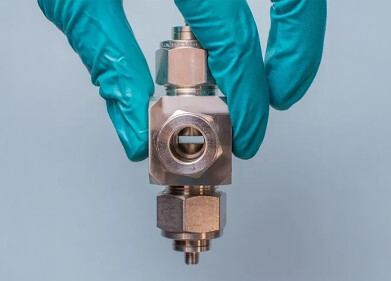Analytical Instrumentation
How Long Will OPEC's Production Cut Continue?
Dec 21 2017
As the world's biggest oil cartel OPEC has serious sway when it comes to influencing prices. Now, the organisation has confirmed that it will extend its current production cut deal for a further nine months. This will bring the embargo right through until the end of 2018.
Together with 10 other producers led by Russia, OPEC has issued a global agreement to slash oil production by 1.8 million bpd until the end of next year. The goal is to eliminate the oil glut and balance inventories back to the industry’s five-year average.
Balancing a multi-million barrel overhang
The cuts will play an important role in rebalancing the market, with Saudi Arabian energy minister Khalid al-Falih revealing that the country still has around 150 million barrels of overhang.
"It is going to take the second half 2018 to draw that down,” he asserts.
Nigeria and Libya set to be hit with "soft" cuts
While Nigeria and Libya are currently exempt from the production cuts, the Financial Times recently reported that OPEC is currently working on a deal that will include the two small scale African producers.
Nigeria’s Oil Minister Emmanuel Kachikwu has confirmed speculation, revealing that there are plans to impose "soft" production cut targets on Nigeria and Libya based on average production statistics.
“This doesn’t mean a carte blanche for Libya and Nigeria. This is where we are and what we are still discussing,” comments Kachikwu.
So how "soft" is soft? Kachikwu has revealed that Nigeria could be issued with a cap of around 1.8 million bpd, while Libya would be restricted to around 1 million bpd. However, he has also stressed that these figures are only “indicative” and that as of yet they shouldn't be included in the final OPEC statement.
Saudis reap the benefits
Major oil producing members are already reaping the benefits, with Saudi Arabia expecting revenue to jump by 12% in 2018.
“All producers – whether companies and countries – have benefited significantly from the course of action that we have taken and therefore they would benefit from continuing the course but not beyond reaching balance,” comments Falih.
With production cuts now extended until the end of 2018 there will be a renewed focus on maximising profits and minimising operational costs. Testing the retention mechanisms of seven commercial capillary columns, 'Principal Component Analysis (PCA) Evaluation of Seven Commercial Ionic Liquid Capillary GC Columns' introduces the latest solutions being used to enhance the separation capacity of the GC technique.
Digital Edition
PIN 25.5 Oct/Nov 2024
November 2024
Analytical Instrumentation - Picturing Viscosity – How Can a Viscometer or a Rheometer Benefit You? - Sustainable Grease Formulations: Evaluating Key Performance Parameters and Testing Method...
View all digital editions
Events
Dec 03 2024 Dusseldorf, Germany
Dec 08 2024 Anaheim, CA, USA
Turkey & Black Sea Oil and Gas
Dec 11 2024 Istanbul, Turkey
Dec 19 2024 Aurangabad, India
Jan 20 2025 San Diego, CA, USA



















